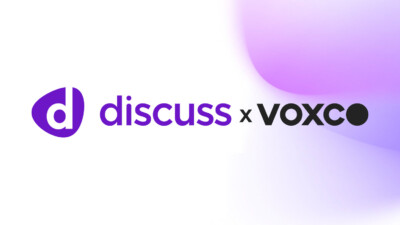The Benefits of Online Ethnography

Research Techniques for Online Ethnography
A method originating in anthropology, ethnography combines observational and interviewing techniques to better understand communities and cultures. It seeks to uncover the meaning behind human actions, exploring not just what people do but why they do it. As a form of qualitative research, ethnography merges both behavioral and communications feedback. Whereas many research methods focus on one aspect or the other, ethnography incorporates both behavioral and feedback-based insights, giving a more in-depth, holistic perspective of a study’s subjects and their lived experiences. This multidimensional approach enables researchers to go beyond surface-level responses and truly grasp the context, motivations, and emotions that shape behavior.
The Intersection of Market Research and Ethnography
While ethnography is primarily concerned with understanding the setting or environment in which the subject of a study is embedded, qualitative market research looks at the setting or place as just one factor among many that influence a subject’s behaviors, attitudes, emotions, beliefs, and opinions. In market research, researchers often need to translate those cultural or behavioral insights into actionable business strategies.
Unlike ethnography, market research emphasizes data that is actionable and strategically relevant. Therefore, ethnographic market research findings should be pertinent, verifiable, and instructive—helping organizations make data-informed decisions while still respecting the complexity of human behavior. A strong method of research to accomplish this balance is online ethnography, which enables researchers to conduct ethnographic studies in a more structured, flexible, and scalable way. By bringing ethnographic observation into digital spaces, researchers can capture authentic, real-time behaviors and interactions that might otherwise be difficult or costly to access in person.
Research Depth
Analysis is where the true value of in-depth, context-rich ethnography can be unlocked. Ethnography often features a wide representation of target and potential markets; researchers typically use a systematic approach to chart anomalies and interesting cases. These nuances—small but telling details—often reveal the most powerful insights. While a broad sampling is useful for identifying trends and patterns, ethnography can also be employed for follow-ups or other research methods that focus on specific audiences or subcultures.
Ethnography is a powerful way to chart participants’ experiences in their regular environments, such as at home, in the workplace, or in their communities. The research is deeply contextual; variables such as time of day, presence of others, physical environment, or even emotional state can all affect how participants use or perceive brands, products, and services. Understanding these subtle variations helps researchers paint a more accurate picture of real-world decision-making and user experience.

The Benefits of Using Online Ethnography
Traditional ethnography is both time-consuming and expensive. Researchers must dedicate significant time to logistics, correspondence, and travel. Markets, meanwhile, are changing at an unprecedented rate and will continue to do so for the foreseeable future. Technological advances like high-definition video streaming and mobile recording make online ethnography techniques far more feasible and effective. There are several key benefits to using online ethnography when conducting research.
Minimal Intrusion
Experienced researchers are well aware that any intrusion into a subject’s natural setting can affect the outcome. Yet traditional ethnography requires the physical presence of a researcher and sometimes even a video crew. Online ethnography techniques minimize this presence, allowing participants to act more naturally in their familiar environments. This reduced intrusion leads to more authentic portrayals of participants’ daily activities, routines, and emotional states, providing a truer picture of their experiences.
Cost-effectiveness
Because traditional ethnography involves travel, lodging, and on-site staffing, costs can escalate quickly. Online ethnography, by contrast, allows ethnographers to interact with participants virtually—through webcams, smartphones, or digital diaries. This dramatically reduces overhead and enables studies that span multiple regions or demographics. The ability to conduct cross-cultural research without geographic limitations is one of online ethnography’s strongest advantages, especially for brands that operate globally.
Study Duration and Participant Comfort
In traditional ethnographic research, participant willingness and budget are the two major barriers to prolonged observation. Participants may begin to alter their behavior over time when they know they are being watched. Online ethnography minimizes this effect. Because participants can contribute from their own homes and on their own schedules, they tend to feel more comfortable and genuine, which enhances the validity of the data collected. This also opens the door for longer-term studies that follow behavioral changes over weeks or months without the logistical burden of constant researcher presence.
Better Inclusion and Collaboration
In traditional setups, ethnographic teams often split between those in the field and those analyzing data back in the office. This separation can slow down communication and delay findings. Online ethnography platforms, however, are built to support collaboration. Researchers, clients, and analysts can observe live sessions, communicate in real-time, and discuss emerging themes collaboratively. This real-time access accelerates insights and encourages cross-functional participation from marketers, product teams, and strategists alike.
Participant Variety and Reach
Few people are comfortable hosting researchers in their personal spaces, and recruiting participants across diverse locations can be challenging and costly. Online ethnography removes these barriers by tapping into vast global respondent pools. Participants from different backgrounds, regions, and cultures can easily contribute via digital platforms, giving researchers a much broader and more diverse perspective. This diversity is particularly valuable for brands operating in multicultural or international markets, where understanding cultural nuances is key.
Online Ethnography and Agility
Online techniques also increase ethnography’s compatibility with modern agile market research practices. Agile methods—known for iterative testing, rapid feedback loops, and customer-centered design—are often at the forefront of product development. Traditional ethnography, while rich in insight, typically moves at a slower pace than the fast cycles of contemporary business. Online ethnography bridges that gap by delivering deep, qualitative insight at a speed that aligns with product and marketing timelines.
Moreover, online ethnography can integrate seamlessly with other research tools such as online focus groups, surveys, and digital communities. Insights can be gathered, tested, and validated quickly, ensuring that research stays relevant to ongoing market shifts. In a business environment where consumer sentiment can evolve overnight, this combination of depth and speed is invaluable.
In summary, online ethnography maintains the spirit and rigor of traditional ethnographic research while introducing efficiency, inclusivity, and scalability. It gives researchers the ability to observe authentic behaviors, analyze meaningful context, and derive actionable insights—all without the limitations of physical presence. As technology continues to advance, online ethnography will likely become an even more essential tool for organizations seeking to understand their audiences in a nuanced and human-centered way.
Read our article, “What are Market Research Tools?” to learn how to use market research tools for conducting online ethnography.
Ready to unlock human-centric market insights?
Related Articles

Unifying Insights With A Qualitative Research Repository
Explore the benefits of integrating live interviews, asynchronous activities, and off-platform research into a centralized qualitative research repository for streamlined…
Explore the benefits of integrating live interviews, asynchronous activities, and off-platform research into a centralized qualitative research repository for streamlined…

A Guide for Qualitative Research Platform Selection
Insights for Selecting the Right Vendor to Drive Your Research Initiatives In the realm of market research, the choice of…
Insights for Selecting the Right Vendor to Drive Your Research Initiatives In the realm of market research, the choice of…

Top 4 Must-Haves of an All-in-One Qualitative Research Platform
Get human-centric insights at scale with a purpose-built qualitative research platform Let’s be honest—running qualitative research today can feel like…
Get human-centric insights at scale with a purpose-built qualitative research platform Let’s be honest—running qualitative research today can feel like…



